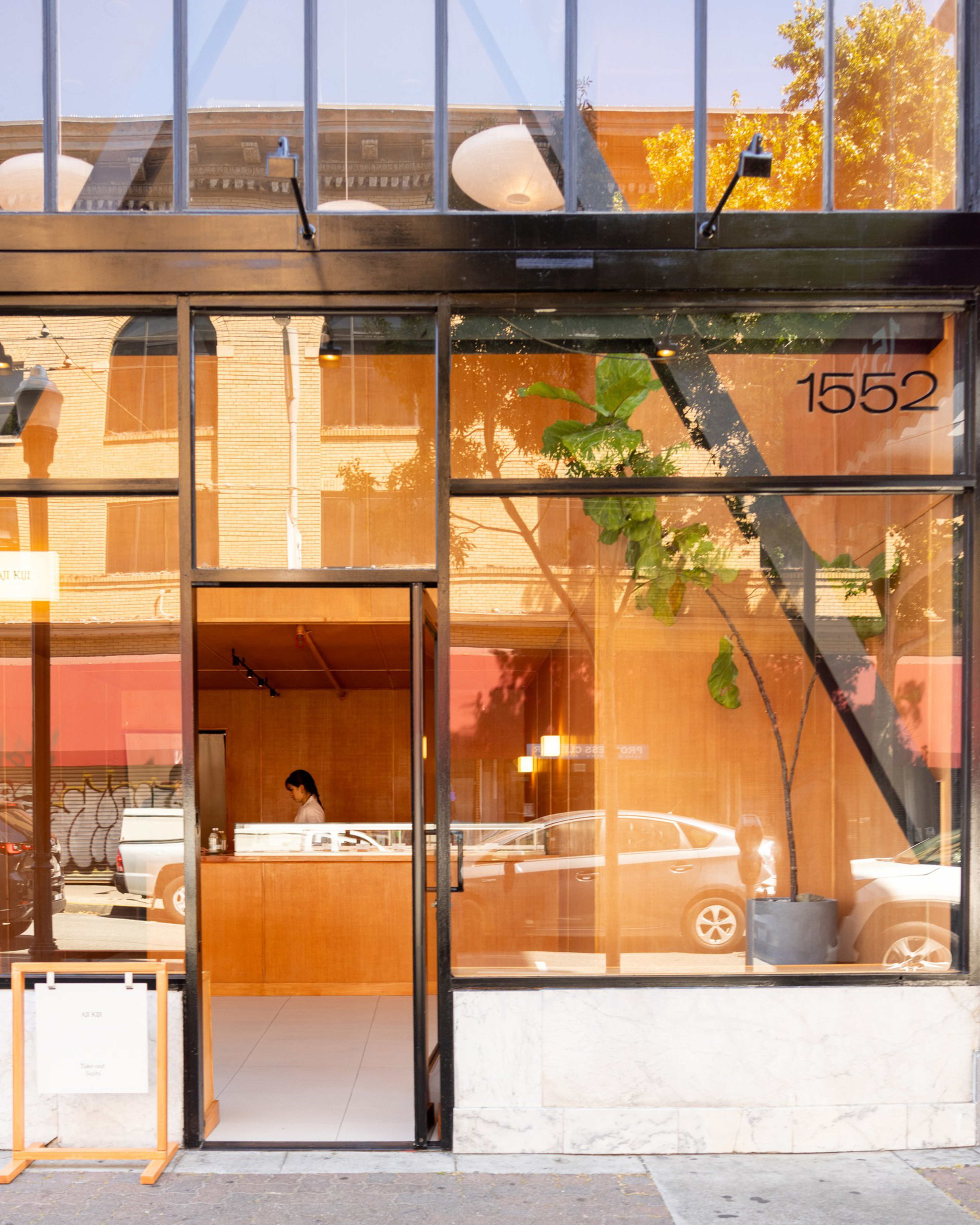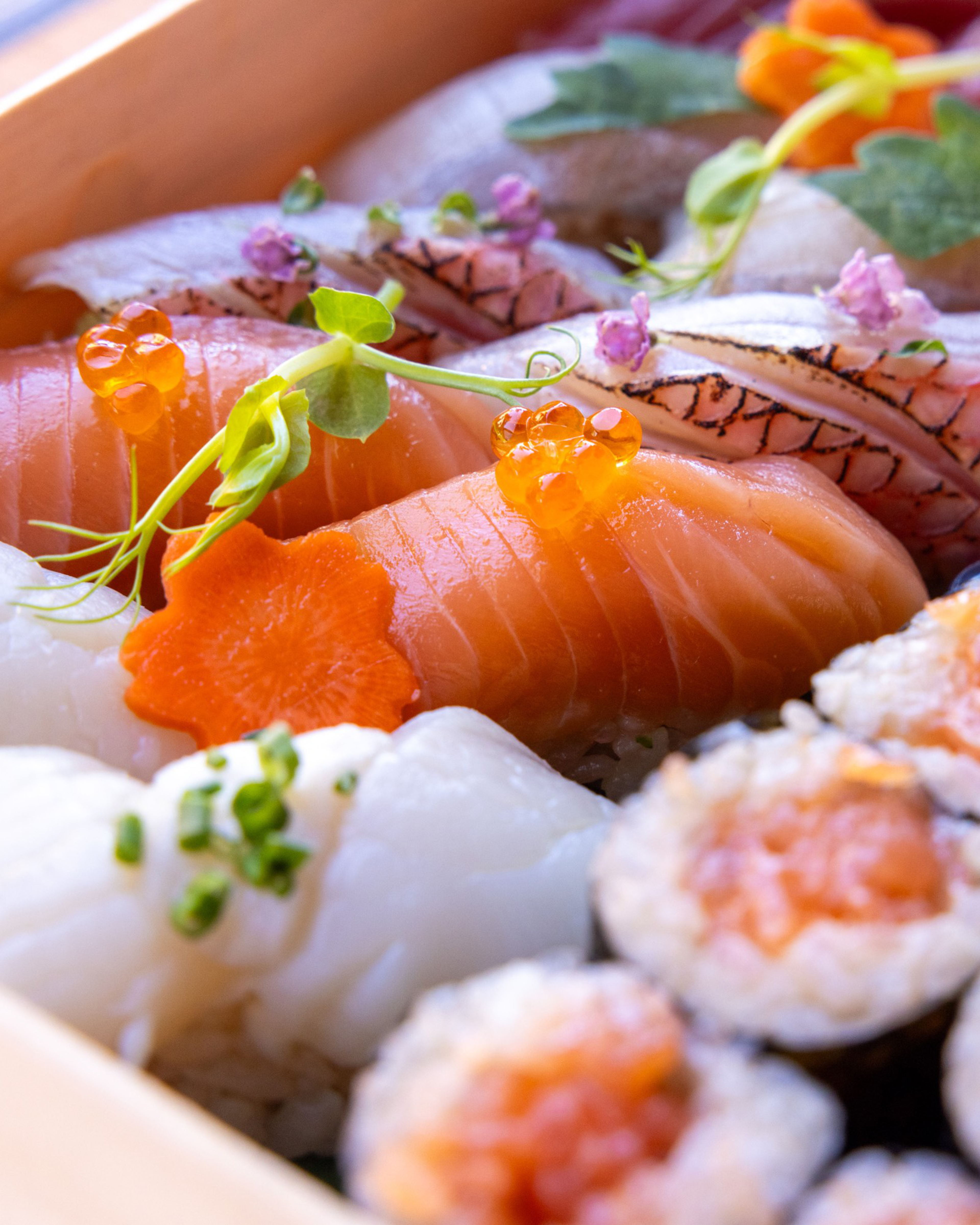If you walk by the windowed storefront at 1552 Fillmore St., you might assume the neighborhood just got a new upscale jewelry store, perhaps a boutique chocolate shop.
Nearly every inch of the interior has been wrapped in warm wood, polished to a lustrous sheen. Save for a gangly fiddle-leaf fig plant leaning in the corner and two small benches that seem more ornamental than functional, the space is barren. The austerity forces your eyes to the countertop display case, glowing softly near the back wall.
Inside wait meticulously prepared boxes, ready for sale. But they aren’t precious gems or expensive sweets. They’re sushi.

Aji Kiji’s minimalist design befits its simple goal: offer premium sushi at a (relatively) affordable price. Chef Jinwoong Lim made his bones at Kinjo (opens in new tab) (now closed) and Kabuto (opens in new tab) in the Richmond. Now he’s applying that high-end experience to a takeout-only model.
At Aji Kiji, Lim makes a limited number of sushi boxes every morning, then opens the doors until they’re sold out. The first week, he made five each of the 10 items on the menu, and the stock lasted most of the day. By the third week, he’d ramped up to 10 of each item — and all sold out in an hour. Due to the high demand, there’s no online ordering (opens in new tab) yet. So if you want to secure a meal, your best bet is to come when the restaurant opens at 11 a.m.
One of the most popular options has been the sake don ($26), which includes thick slices of both fresh and smoke-imbued salmon topped with roe, over a bed of khaki-colored rice. The hue of the short-grain Tamanishiki, grown in the Sacramento-San Joaquin River Delta, is the result of the two kinds of red vinegar Lim adds. “I think that [red vinegar] has more flavor,” he says, noting that the taste and texture of the rice are key components of great sushi.

The tawny grains also serve as the foundation for the nigiri in the 10-piece sushi and maki combo ($43), where Lim’s expertise truly shines. The meticulously produced nigiri feel like they should be eaten reverently at a six-seat counter. In fact, I felt a little naughty unceremoniously digging in with my hands while watching prime-time Olympics reruns from the comfort of the couch.
There was a blush-pink slice of aji, or horse mackerel, garnished with a bump of daikon and a slab of red snapper, cut to leave a sliver of skin intact. Lim torches the skin slightly to create a juxtaposition of textures and adds a pinch of lemon zest to cut through the richness of the flesh. The box also houses three kinds of tuna — bluefin, medium fatty chutoro and deeply marbled otoro — plus buttery amberjack, scallop and two kinds of salmon.
Each box comes with a tiny, fish-shaped bottle of house-blended soy sauce (Lim says the pre-made stuff is just too salty) and an array of tsukemono, or Japanese pickles. The carrots come in the shape of miniature flowers; the radishes in tiny half moons. Tucked into the corner is a rectangle of tamago (opens in new tab), a delicate omelet Lim’s proud to make at the restaurant.


Lim’s working on ramping up production (he just hired someone to help him make sushi) since he splits his time between Aji Kiji and his upscale Korean restaurant, Bansang (opens in new tab), located next door. After making sushi for years, he opened Bansang in April 2022 as a way to return to his roots. Now that it has stabilized — and earned a spot in the Michelin Guide (opens in new tab) — he’s able to turn some attention elsewhere.
The chef has one piece of advice for Aji Kiji customers: Since sushi is ideally eaten at room temperature, wait at least 30 minutes after buying your box to dig in. A full hour would be better; in a perfect world, two.
“But I know,” he says with a small smile, “it’s hard to wait.”
📍 Aji Kiji, 1552 Fillmore St., Japantown
Correction: After publication, chef Lim informed the Standard that Aji Kiji raised prices $2-3 per item as of this week.

